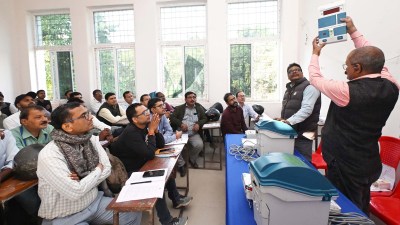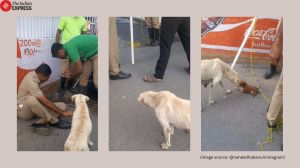$70 bn inflows needed: Rangarajan
India needs capital inflows of $70 bn annually for next 5 yrs to cut CAD to 2.3% of GDP: PMEAC
India needs net capital inflows of up to USD 70 billion annually for the next five years to bring Current Account Deficit (CAD) down to 2.3 per cent of GDP,Prime Minister’s Economic Advisor C Rangarajan said today.
“To sustain 2.3 per cent CAD over the medium-term,we would need net capital inflows of at least USD 50-70 billion annually over the next five years.
“Given the uncertainty around both the push factors (rising global risk aversion) as well as pull factors (slow growth here) that determine capital inflows,attracting such a magnitude of inflows could very well be an uphill task,” said the Chairman of PM’s Economic Advisory Council (PMEAC) while delivering a lecture here this evening.
However,the former Reserve Bank Governor said there is an expectation of the CAD to be around 3.5 per cent of GDP in the current fiscal.
Blaming the merchandise trade deficit as responsible for the higher CAD of 3.9 per cent in the first quarter of the fiscal,Rangarajan said “we should also aim at reducing the trade deficit to 6 per cent from the current 10 per cent”.
Current account deficit occurs when a country’s total imports of goods,services and transfers is greater than the country’s total export of goods,services and transfers.
He said it may not be possible immediately to bring CAD down to 2.3 per cent but expressed confidence it can come down to 2 per cent of GDP in the next six to ten years. The government is looking at a CAD figure of below 2 per cent.
Rangarajan said to sustain the CAD at a comfortable level of 2.5 per cent of GDP,the country will require capital flows of USD 50-70 billion per year for the next five years.
The CAD,or the imbalance between foreign exchange earned and foreign exchange expended,stood at 3.9 per cent of GDP in the first quarter of FY13,but better than 4.5 per cent recorded during Q4 of FY12 on the back of slowing imports. CAD stood at 4.3 per cent in FY12.
In absolute terms,the CAD came down to USD 16.4 billion in the first quarter against USD 21.8 billion in Q4 of FY12,data released early this week said. The BoP (balance of payment,in the meanwhile,rose to USD 0.5 billion.
The CAD touched a historic high of 4.3 per cent of GDP for the full year in FY12,while in Q2 of last fiscal it had touched a whopping 4.5 per cent of GDP.
Within imports,gold and silver declined 47.5 per cent y-o-y and growth in non-oil,non-gold imports continued to slide,coming in at 0.3 per cent y-o-y,reflecting the slowdown in domestic demand,due to the hike in Customs on gold and a sharp fall in the rupee against the US dollar.
The rupee has been heading north since July after hitting a life-time low of 57.13 vs dollar in mid-June. Since the beginning of the year,the local currency has gained over 7 per cent,but it is still down 18 per cent from its pre-
August 2011 highs. The rupee closed 2011 as the biggest loser among the BRIC currencies.
Rangarajan said the depreciation of the rupee,which has been very volatile in the past 10 months,has a bearing on the capital inflows. He called for policy actions to prevent the rupee from rising considerably in real terms.
On growth,he said it will pick up in the second half of FY13 and stuck to PMEAC’s growth estimate of 6.5 per cent.
To a query on the second quarter monetary policy review by the RBI later this month,he said the central bank will be in a position to slash interest rates only if inflation comes down. In August,the headline price index rose to 7.55 per cent from 6.87 per cent in the previous month.
Asked about the Kelkar panel’s suggestion to end subsidies,the PMEAC head there is a need to bring the subsidy bill down to 1.7 per cent of GDP from 2.4 per cent currently.
On fiscal deficit,he said attempts will be made to keep it close to the budget target of 5.1 per cent.



- 01
- 02
- 03
- 04
- 05




























